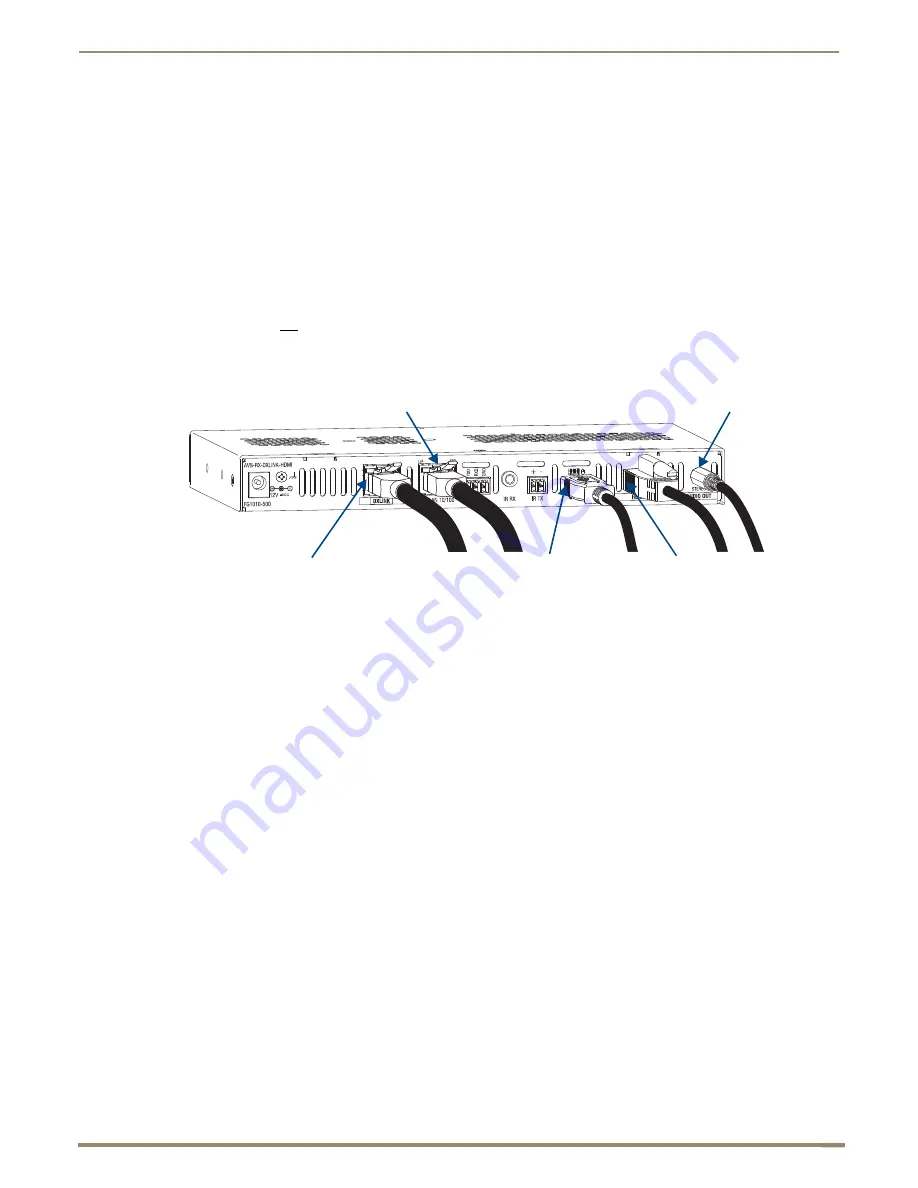
Installation and Setup
57
Instruction Manual – DXLink™ Twisted Pair Transmitters/Receiver
Multi-Format TX and HDMI TX– LED Troubleshooting
If indicator LEDs for modules do not respond with a normal display as stated in table on previous page:
Check all power connections.
Check the “Detailed NetLinx (Link/Act and Status) LED Behavior” section on page 62.
Try the suggestions in the “Troubleshooting” chapter (see page 99).
For information on restoring the module’s default settings on power up, see page 69.
HDMI RX – Attaching Signal and Control Cables
Important:
Before attaching cables, be sure to set DIP switch’s toggles if necessary (see page 44).
Important:
Do not use the RJ-45 connector labeled “DXLink” for connecting to a standard Ethernet Network.
Note:
Power, IR, and RS-232 ports are covered in their own sections.
To attach signal, transport, and control cables to the HDMI RX:
1.
DXLink (input) connector – Attach a twisted pair cable from the switcher (or Multi-Format TX or HDMI TX) to
the DXLink connector on the HDMI RX.
2.
HDMI Out connector – Attach the HDMI cable that goes to the destination device.*
3.
ICS LAN 10/100 connector (optional) – Attach a twisted pair cable from this connector to a LAN. (For NetLinx
programming information, see page 78.)
4.
USB port (optional) – Connect to a hub using a USB-A cable; connect keyboard and mouse to the hub. (This port is
for sending keyboard / mouse commands to a PC.) For USB port information, see page 26. For USB
SEND_COMMAND information, see page 94.
5.
Stereo Audio Out connector (optional) – Plug the audio cable (that goes to the audio destination) into the stereo
audio jack. For audio precedence information, see page 52. For information on audio SEND_COMMANDs
(including enabling the analog audio format), see page 82.
* DVI cable can be used instead (via a DVI-to-HDMI cable adapter); however, the advanced audio support from HDMI
will not be available.
Note:
The ID Pushbutton places the HDMI RX in ID Mode for setting the NetLinx ID (device only) and
provides additional functionality, such as placing the device in Static IP Mode or DHCP Mode. For information,
see page 67.
Tip:
If scaling adjustments are necessary, use SEND_COMMANDs (see page 78). If connected to an
Enova DGX output, use DGX Configuration Software via the switcher for scaling.
FIG. 32
Attach signal and control cables to HDMI RX
USB port
HDMI Out connector
DXLink input connector
Stereo audio port
ICS LAN 10/100 connector






























